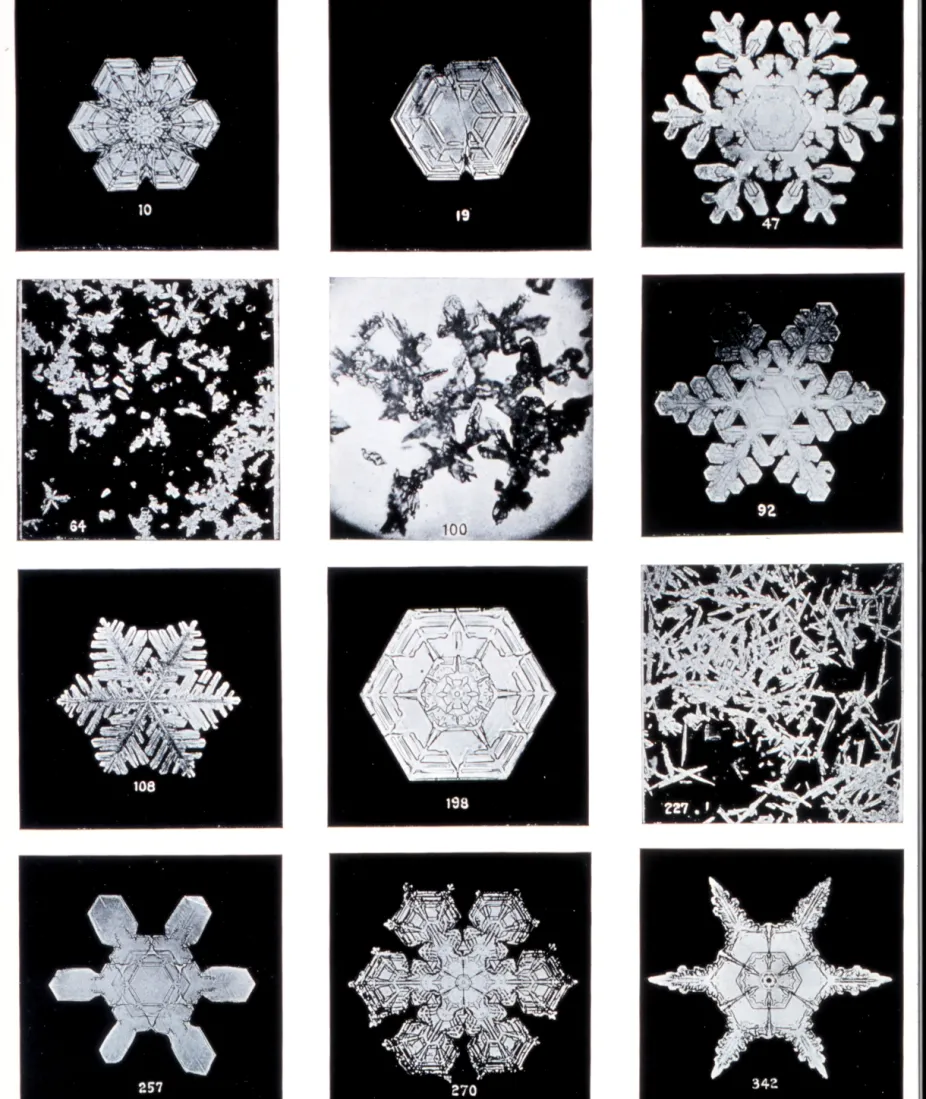What Are Snowflakes?
Each snowflake is made of as many as 200 ice crystals. Some snowflakes are symmetrical, like the type that you cut from paper. They form a hexagonal (six-sided) shape because that is how water molecules organize themselves as they freeze. Some snowflakes become lopsided if they fall sideways to the ground. Snowflakes that spin like tops as they fall to the ground stay symmetrical.
Have you heard that no two snowflakes are the same? Probably no two snowflakes have exactly the same arrangement of molecules, but they can look alike.

Over a century ago, a farmer in Vermont named Wilson Bentley was photographing snowflakes and studying snowflake shapes.
Wilson Bentley, 1902
How Snowflakes Form
Snowflakes form in clouds where the temperature is below freezing (0ºC, or 32ºF). The ice crystals form around tiny bits of dust that have been carried up into the atmosphere by the wind. As the snow crystals grow, they become heavier and fall toward Earth. Different types of snowflakes form in different conditions. Temperature determines if the crystals become a flat plate, a long column, or a prism shape.
Other Icy Precipitation
Snow is not the only type of ice that falls from the sky!
- Graupel: Snowflakes that have become encrusted with ice. This happens when snowflakes pass through a chilly cloud on their way down, and water droplets freeze on them.
- Ice pellets: Frozen raindrops, also known as sleet. They are usually quite small in size and, unlike snowflakes, do not have a crystal shape.
- Hail: A frozen raindrop or graupel that is kept from falling to the ground by the upward flowing air of a thunderstorm. The more droplets that freeze onto the hailstone, the longer the hailstone spends in the sky. When it finally grows too heavy to be held up by the flowing air, it falls to the ground.
Try it: Catch Some Snowflakes
If you are in a place where snow falls, try catching snowflakes and taking a close look at them!
What you will need:
- Black construction paper
- Magnifying glass
- Warm winter clothes
- Falling snow
What you do:
- Go outside in your warm winter clothes as snow is falling. Take the black paper and magnifying glass with you.
- Hold the black paper flat so that snowflakes fall on it. Keep your hands at the edges of the paper to avoid melting snowflakes.
- Take a look at the snowflakes through the magnifying glass. What shapes do you see?